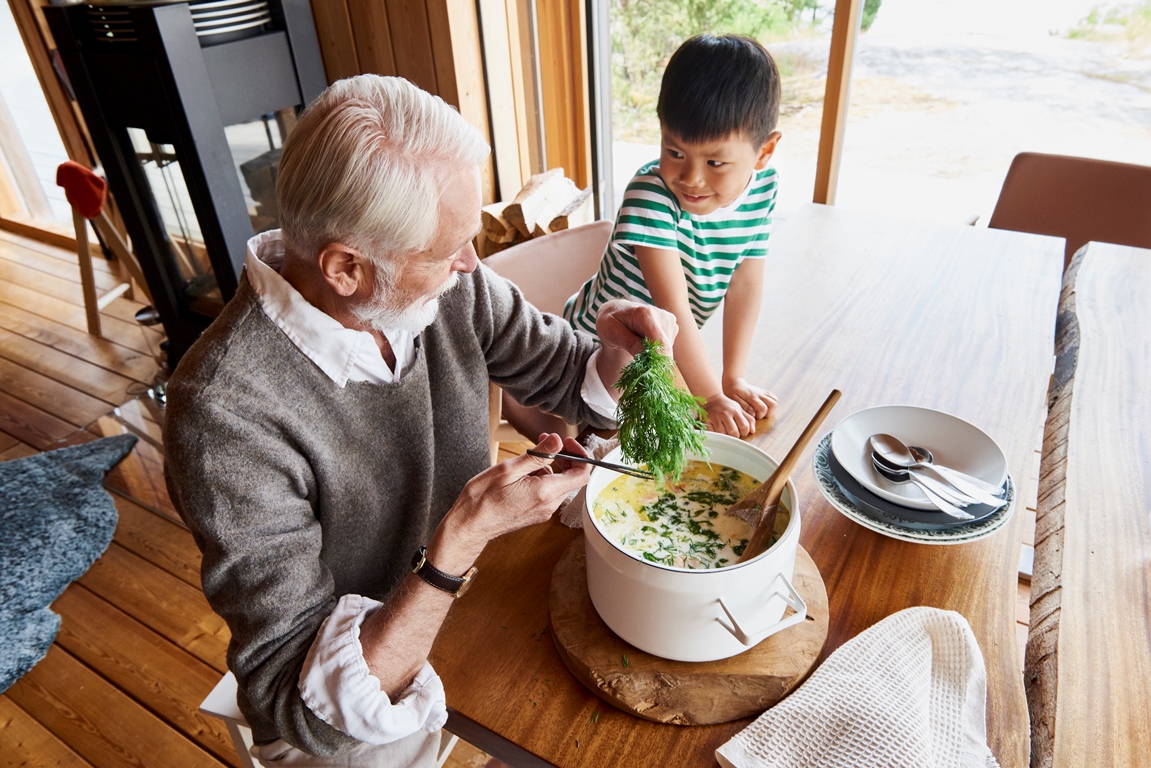Valio has announced its nutrition agreement for improving the health and wellbeing of consumers. The ambitious targets for reducing salt and sugar content in Valio’s products by 2020 are part of our sustainability programme and continued efforts to improve public health.
The United Nations’ sustainable development goals for 2016–2030 aim at eradicating poverty and safeguarding wellbeing in environmentally sustainable ways. Alongside contributions from nation-states, however, the efforts of companies are also needed. Valio’s nutrition agreement is part of Finland’s Agenda2030 programme.
Valio’s nutrition agreement helps consumers to reduce their use of sugar and salt, and makes it easier to make low-salt choices or recipes. From 2015–2020, Valio will double the number of snack products it makes that are unflavoured, sugar-free, and with 20–50% less sugar than before. The goal for reducing salt content is to sell seven million kilos of Valio ValSa® reduced-salt products annually by 2020. Valio will also provide details of the amount of salt in all Valio recipes by 2020.
“Our commitment is linked in particular to two UN goals: ensuring an adequate standard of food and nutrition, and improving health and wellbeing. Meeting these goals is essential, since the world’s population is projected to grow to as much as 9 billion by 2030. In Valio’s sustainability programme, we have committed to concrete actions that respond to global nutrition challenges. Innovations to improve health and wellbeing have been part of Valio already for decades, since Nobel Prize winner A.I. Virtanen was heading the Valio laboratory”, says Senior Vice President of Research and Technology Anu Kaukovirta-Norja.
“Valio website contains one of Finland’s most popular recipe collections. The site receives an average of 1.1 million visitors a month, and has around 4,000 recipes. This gives us a great opportunity, and also a responsibility, to help consumers to make smart food choices. People need healthy products, especially in their everyday lives. Of course, a few treats now and then are also part of overall wellbeing”, Kaukovirta-Norja adds.
Consumers want products to be both healthy and tasty
On average, the intake of sugar per person in Finland is almost twice the recommended daily amount of 50 grams. Among the consequences of this is an increased risk of developing type 2 diabetes. The average consumption level of salt is also often well above the recommended limit, despite it being common knowledge that excessive salt use contributes to cardiovascular disease.
“Great-tasting food is extremely important to people, and is not something they want to give up on. The role of Valio and other food companies is to rethink how salt and sugar can be reduced without compromising on taste”, says Kaukovirta-Norja.
Valio’s low-salt product range, cheeses and spreads with Valio ValSa®, was launched in 2016, and by the end of 2017 almost four million kilograms of these products were sold. The goal is to bring the annual sale of Valio ValSa® products up to seven million kilos by 2020.
“Thanks to the milk salt innovation on which the Valio ValSa® products are based, we have reduced salt use in cheeses and spreads by up to 50 percent, without affecting taste. The taste of milk salt comes from the minerals naturally contained in whey and will soon bring more, completely new products with Valio ValSa® milk salt to the market. Valio’s commitment to reducing salt use will result in the reduction of salt use by about 38,000 kg annually, which is about six million teaspoons of salt”, Kaukovirta-Norja adds.
A major part of Valio’s R&D work at the moment focuses on reducing sugar. In 2015 Valio made 84 different snack products that met Valio’s commitment of reducing sugar content, and by 2017 Valio had increased that number to 136. The target for 2020 is to have 168 low-sugar products.
“Valio’s expertise in product development and technology is unique on the global level, and rests on more than a century of experience and know-how. For example, we are studying the potential for using new kinds of fermentation cultures and enzymes for enhancing flavor. We will also examine how we can even more effectively use the sugar contained in berries and fruit and how modern technologies can be used to create great taste at our new snack plant in Riihimäki, Southern Finland ”, says Kaukovirta-Norja.




